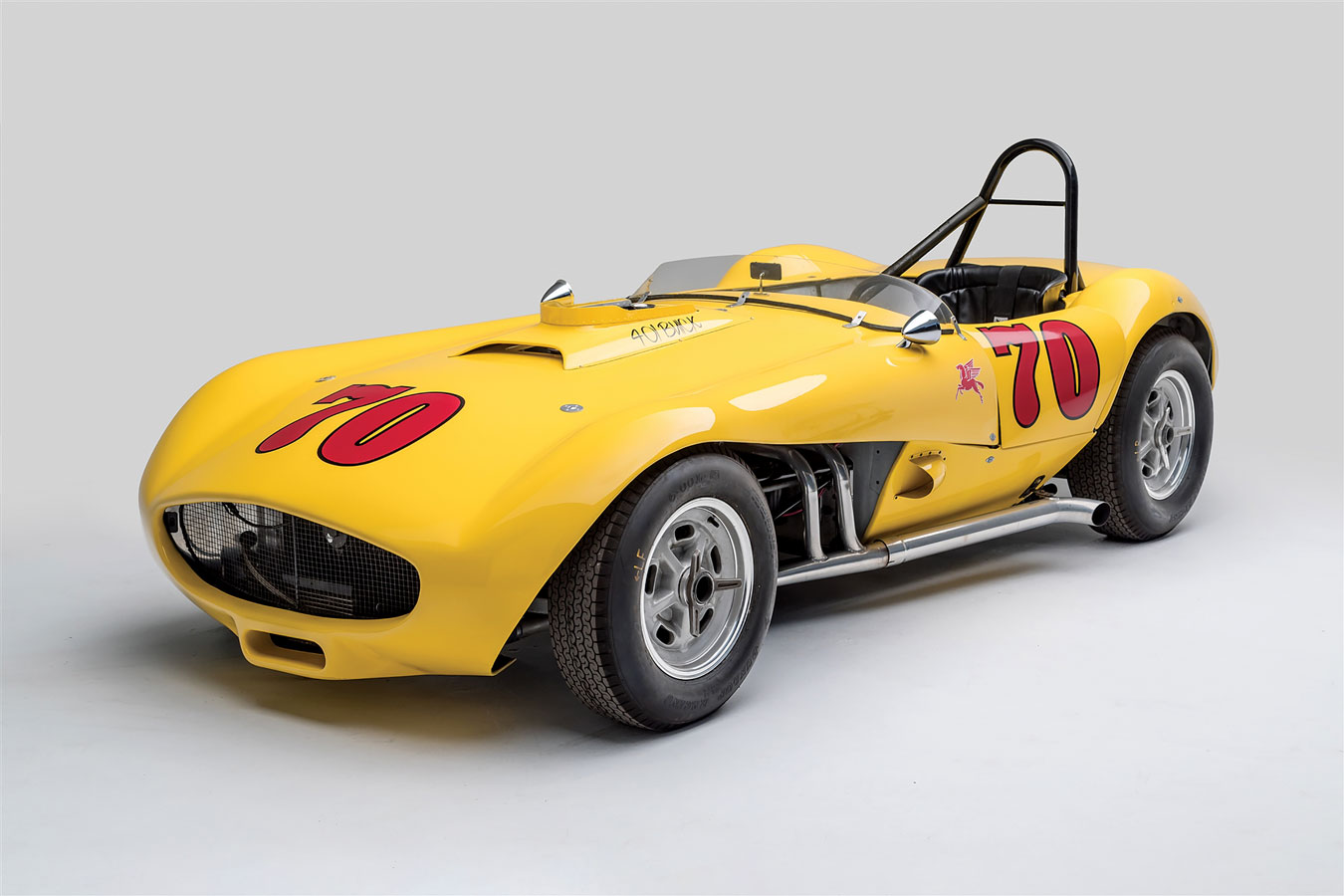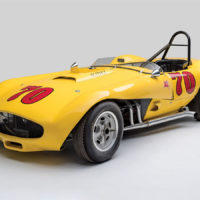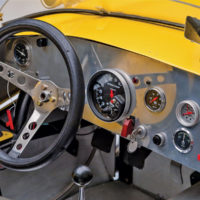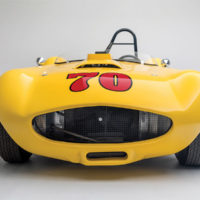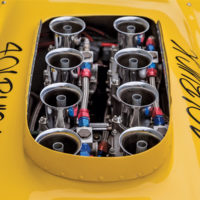SCM Analysis
Detailing
| Vehicle: | 1963 Ol’ Yaller Mark IX Sports Racer |
This car, Lot 32, sold for $162,400, including buyer’s premium, at the Audrain Concours Auction on October 1, 2021.
The mid-to-late 1950s were the glory years for American road-race specials. The sport was growing like crazy and most of the available competition was either slow and crude (MGs, early Triumphs), faster but still crude (Allards), or expensive (Ferraris, which in those days were still pretty crude). Jaguar had an impressive racer in its C-type, but its iron-block, 3.4-liter engine was limiting if you wanted to run at the front. Tires were terrible, aerodynamics were, for the most part, unknown. Nobody had anything like a sophisticated suspension and drum brakes still ruled.
Add to this a healthy dose of American post-war “can-do” entrepreneurship and the route was wide open for enthusiastic amateurs like Bill Janowski with his Monsterati (an old Maserati GP chassis with a big V8) to talented hot-rod fabricators like Max Balchowsky. In those days, the front of the big-bore grid belonged to rich guys like Jim Kimberly or Briggs Cunningham. Their hired drivers and organized teams would be on one side and cheerfully anarchic “ordinary folks” in V8 specials on the other. Both could and did win; it was a wonderful time for the sport.
Taking on the “big boys”
Max Balchowsky was a gifted seat-of-the-pants automotive engineer, fabricator, master showman and storyteller. He reveled in the tattered outsider role when it came to sports-car racing, but it wasn’t entirely true. He had a shop on Hollywood Boulevard that catered to the rich and powerful, and he had substantial financial backing in the early days from financier Eric Hauser (and later from cinematographer Haskell Wexler). He was cheap, but not poor.
His first serious racer became known as “Ol’ Yeller I” and was easily the most successful of the series. It looked very much the junkyard dog, and Max loved to talk about all its scrapyard parts. But in fact, it had a stiff and light tubular chassis with carefully thought-out front and rear suspension and intelligent weight distribution.
General Motors had pioneered development of the modern “thin wall” cast-iron V8 with Cadillac. By the mid-1950s, it had a 400-cubic-inch Buick engine that was relatively light and made 300 hp. This easily matched the other big guys, so Max used it.
He was renowned for running whitewall tires — preferably recaps — but it wasn’t just being cheap. Balchowsky had figured out that luxury tires had softer sidewall construction and rubber compound for a softer ride, which also made them stickier than “race rubber.” He was no fool.
One good turn…
In the hands of Balchowsky, Hauser and the occasional hired shoe, Ol’ Yeller I proved a serious contender on the West Coast through the late 1950s. Max and Hauser parted amicably, with Hauser keeping the car and Max starting on Ol’ Yeller II.
Construction was similar to the first. The new car had formed-aluminum bodywork that could be easily removed for service and used a newer Buick engine. Yellow and a lot prettier, II was well loved and got great promotion, though it didn’t do as well as the original. Always the businessman, Max was starting to get ideas.
He was helped along by Haskell Wexler, who was sufficiently smitten by Max and the whole road-racing scene that he was willing to help finance the new dream: building a series of Ol’ Yallers.
Running at the front of the unlimited grid was an expensive proposition. A Maserati “Birdcage” was a bit over $10,000, and Ferraris were even more. Max had been approached by several drivers about buying an Ol’ Yaller, and he figured he could sell them for $4,500 each, quite the deal relative to anything Italian. Anticipating demand, Max had a body buck constructed and Troutman & Barnes rolled out seven aluminum body shells. They were committed.
A changing scene
The problem was that his timing was completely wrong. Ol’ Yaller may have been the quintessential American special, but it was big, heavy and bellowing (a 91-inch wheelbase and 2,100 pounds) at a time when small, light and nimble was the new paradigm. A Birdcage was four inches shorter, 800 pounds lighter and carried just as much tire. Cooper’s Monaco and Lotus’ 19 were mid-engine stormers on the rise. Max’s anticipated buyers never showed up.
He did build a few, mostly financed by Wexler to keep the dream alive. Several were street rods; only Mk V, which was bodied and raced as an ersatz 1961 Corvette, had any real success on the track.
The last two, including our subject, pretty much just sat around. There is little evidence that Mk IX ever actually raced, but it eventually got used by Hollywood. During filming of “The Love Bug” it was heavily crashed and put away for 13 years before being restored with parts from the previously destroyed Mk III.
The way racing was
As a 1963 example of a late-1950s concept, Mk IX enjoyed an active vintage-racing career during the 1980s and into the 1990s, mostly pretending it was an earlier car than it was. It was then given to the Petersen Automotive Museum in Los Angeles, where it lived until this sale.
The question is, what do you do with a car like this and what it is worth? Assuming it is allowed to run with the front-engine cars of the 1950s (which it should), a good driver can run at or near the front. But that really isn’t the point of a car like this. If you want a weapon, there are better options.
Any of the Ol’ Yaller cars are primarily iconic collectibles as part of a classic Americana racing display. They catch the spirit, the attitude, the sheer brashness that characterized homebuilt racers of the early period of American road racing. They are just plain fun, and candidly, a lot cheaper than a Scarab or a Chaparral. Fairly bought. ♦
(Introductory description courtesy of Bonhams.)
